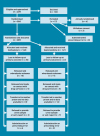Comparison of methadone and buprenorphine for opiate detoxification (LEEDS trial): a randomised controlled trial
- PMID: 22137413
- PMCID: PMC3223774
- DOI: 10.3399/bjgp11X613106
Comparison of methadone and buprenorphine for opiate detoxification (LEEDS trial): a randomised controlled trial
Abstract
Background: Many opiate users require prescribed medication to help them achieve abstinence, commonly taking the form of a detoxification regime. In UK prisons, drug users are nearly universally treated for their opiate use by primary care clinicians, and once released access GP services where 40% of practices now treat drug users. There is a paucity of evidence evaluating methadone and buprenorphine (the two most commonly prescribed agents in the UK) for opiate detoxification.
Aim: To evaluate whether buprenorphine or methadone help to achieve drug abstinence at completion of a reducing regimen for heroin users presenting to UK prison health care for detoxification.
Design: Open-label, pragmatic, randomised controlled trial in three prison primary healthcare departments in the north of England.
Method: Prisoners (n = 306) using illicit opiates were recruited and given daily sublingual buprenorphine or oral methadone, in the context of routine care, over a standard reduced regimen of not more than 20 days. The primary outcome measure was abstinence from illicit opiates at 8 days post detoxification, as indicated by urine test (self-report/clinical notes where urine sample was not feasible). Secondary outcomes were also recorded.
Results: Abstinence was ascertained for 73.7% at 8 days post detoxification (urine sample = 52.6%, self report = 15.2%, clinical notes = 5.9%). There was no statistically significant difference in the odds of achieving abstinence between methadone and buprenorphine (odds ratio [OR] = 1.69; 95% confidence interval [CI] = 0.81 to 3.51; P = 0.163). Abstinence was associated solely with whether or not the participant was still in prison at that time (15.22 times the odds; 95% CI = 4.19 to 55.28). The strongest association for lasting abstinence was abstinence at an earlier time point.
Conclusion: There is equal clinical effectiveness between methadone and buprenorphine in achieving abstinence from opiates at 8 days post detoxification within prison.
Comment in
-
Buprenorphine versus methadone use in opiate detoxification, are there other factors that should be considered?Br J Gen Pract. 2012 Feb;62(595):68-9. doi: 10.3399/bjgp12X625058. Br J Gen Pract. 2012. PMID: 22520768 Free PMC article. No abstract available.
References
-
- National Offender Management Service. Strategy for the management and treatment of problematic drug users within the correctional facilities. London: National Offender Management Service; 2005.
-
- Department of Health and the Devolved Administrations. Drug misuse and dependence: UK guidelines on clinical management. London: Department of Health and the Devolved Administrations; 2007.
-
- Department of Health. Clinical management of drug dependence in the adult prison setting. London: Department of Health; 2006.
-
- Mattick R, Kimber J, Breen C, Davoli M. Buprenorphine maintenance versus placebo or methadone maintenance for opioid dependence. Cochrane Database Syst Rev. 2008;(2) CD002207. - PubMed
-
- Stallwitz A, Stover H. The impact of substitution treatment in prisons — a literature review. Int J Drug Policy. 2007;18(6):464–474. - PubMed
Publication types
MeSH terms
Substances
Associated data
Grants and funding
LinkOut - more resources
Full Text Sources
Medical

